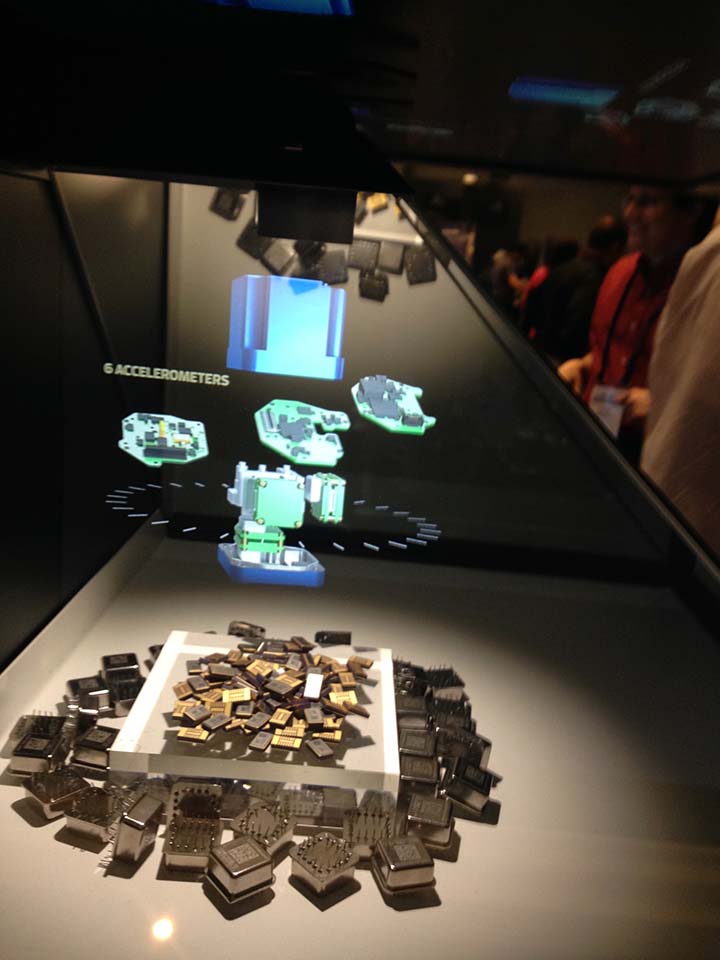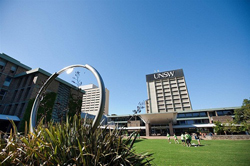High performance inertial sensor technology, receiver signal processing, and robotic and indoor navigation presentations all played a big role in technical sessions at the IEEE/ION Position Location and Navigation Symposium (PLANS) at the Hyatt Regency Monterey in Monterey, California from April 23-26.
But discussions on those key topics were only a portion of what took place at PLANS as the several sessions addressed a variety of other hot topics – including GNSS integrity and augmentation, Vision/integrated navigation systems, and marine vehicle navigation. Additionally, manufacturers launched several products on the show floor and announced big plans for future launches – some of which will take place this week at AUVSI EXPONENTIAL in Denver, Colorado.
Dr. Gary McGraw of Rockwell Collins served as the meeting chair, with Dr. Jacob Campbell, AFRL Sensors Directorate, the vice-chair. Technical program co-chairs Dr. Demoz Gebre-Egziabher and Dr. Mathieu Joerger helped put together a great program that kicked off Tuesday, April 24, and ran through Thursday.
There was something for everyone on Tuesday, and here’s just a few of the session highlights:
• Daniel Maier presented on “Preliminary Assessment on the Vulnerability of NMA-based GNSS Signals for a Special Class of Record & Replay Spoofing Attacks”
• Padma Bolla presented on “Dual-frequency Signal Processing Architecture for Robust and Precise Positioning Applications”
• Michael Larsen presented “Nuclear Magnetic Resonance Gyroscope”
• Tamer Shamseldin addressed “SLAM-based Pseudo-GNSS/INS Localization System for Indoor LiDAR Mobile Mapping Systems”
• In a packed room, Todd Humphreys presented on “Low-cost Precise Vehicular Positioning in Urban Environments”
Close to 20 manufacturers showed off their products and technologies at PLANS, and on Tuesday a number of them were talking about new launches. An Awards Luncheon took place on April 26.
GNSS receiver manufacturer Septentrio announced the launch of the next generation AsteRx-i. The AsteRx-i combines Septentrio’s latest compact, multi-frequency multi-constellation GNSS engine with an external industrial grade MEMS based IMU. It is designed to deliver accurate and reliable GNSS/IMU integrated positioning to the cm-level as well as full 3D attitude at high update rates and low latency. The company also launched the AsteRx SB light and compact ruggedized multi-frequency GNSS receiver and Jan Van Hees told Inside GNSS of plans to release two more sensors later this year.
M-Code
M-Code was also a prominent topic in the exhibit hall.
Lou Pelosi of CAST Navigation said the company is now offering M-Code in an AES unclassified version and is working on an MNSA (modernized navstar security algorithm) classified version to be offered soon. Pelosi said the software upgrade is available for use with all of the company’s GNSS simulation systems.
Spirent Senior Systems Engineer Phillip Bonilla said the company’s SimMNSA Simulating M-Code will be available before the end of the year.
Targeted for Spirent’s GSS9000 GNSS/GPS simulator, SimMNSA’s key features will include: supports simple key and fly scenarios for straightforward receiver integration; supports advanced functions for receiver developers; and allows greater flexibility and control for scenarios than SDS, according to Spirent.
Physical Logic
Physical Logic announced additional grades of their MAXL-CL-3030 tailored to meet customer needs. The company’s closed loop and open loop MEMS accelerometer families are expanding.
Benefits include tactical and inertial grade performance, 15g-70g sensing range closed loop accelerometer, and 2g-70g sensing range open loop accelerometer.
Physical Logic is attending AUVSI XPONENTIAL this week and will also be at the Israeli Pavilion at Eurosatory (Paris, France), June 11-15.
The PLANS conference is jointly sponsored by the Aerospace and Electronics Systems Society (AESS), and the Institute of Navigation (ION). The AESS is sponsored by the IEEE, which is the world’s largest professional engineering organization. The ION is the world’s premier professional organization for the advancement of positioning, navigation and timing.





